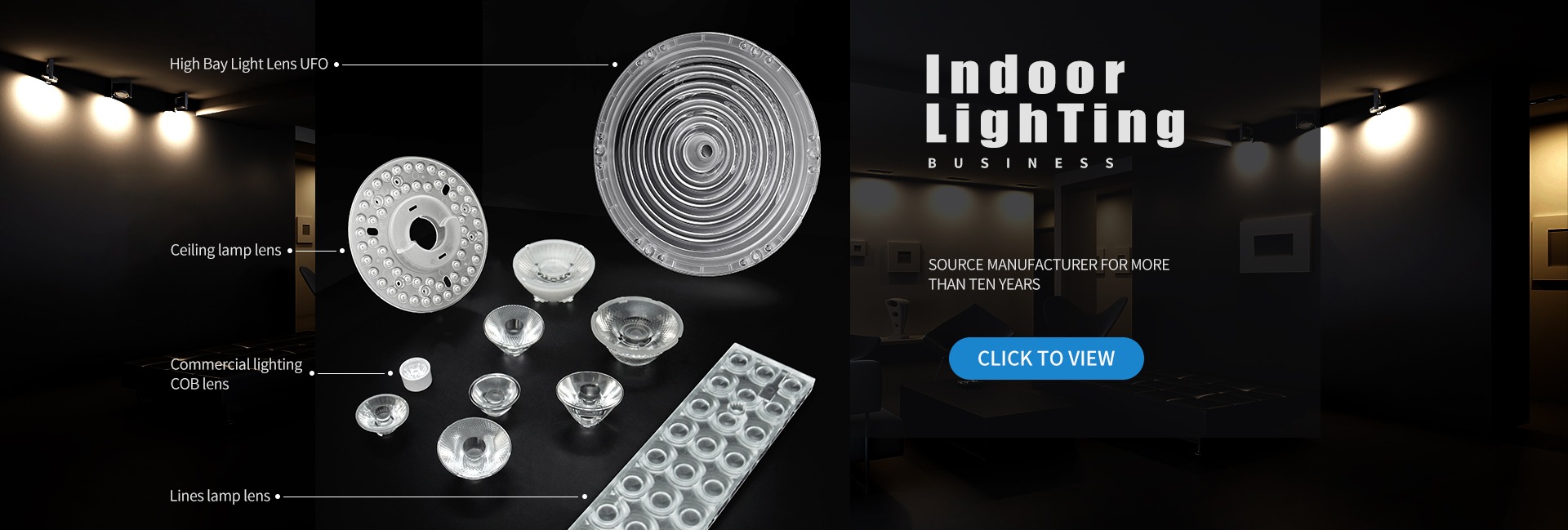
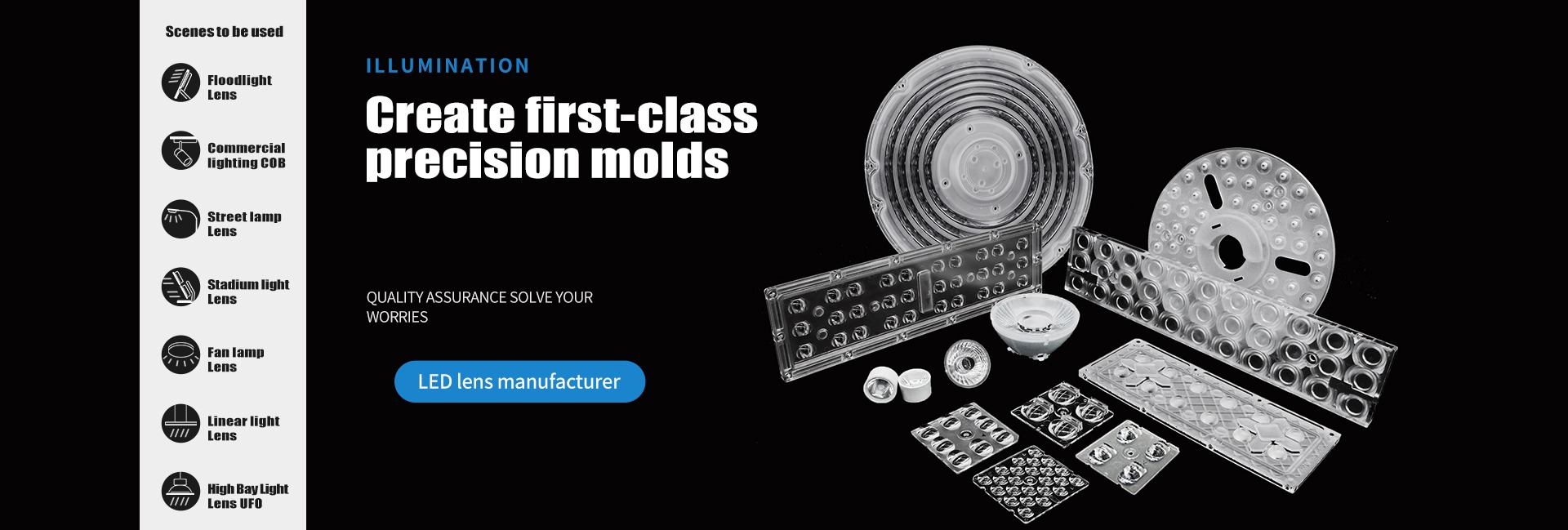
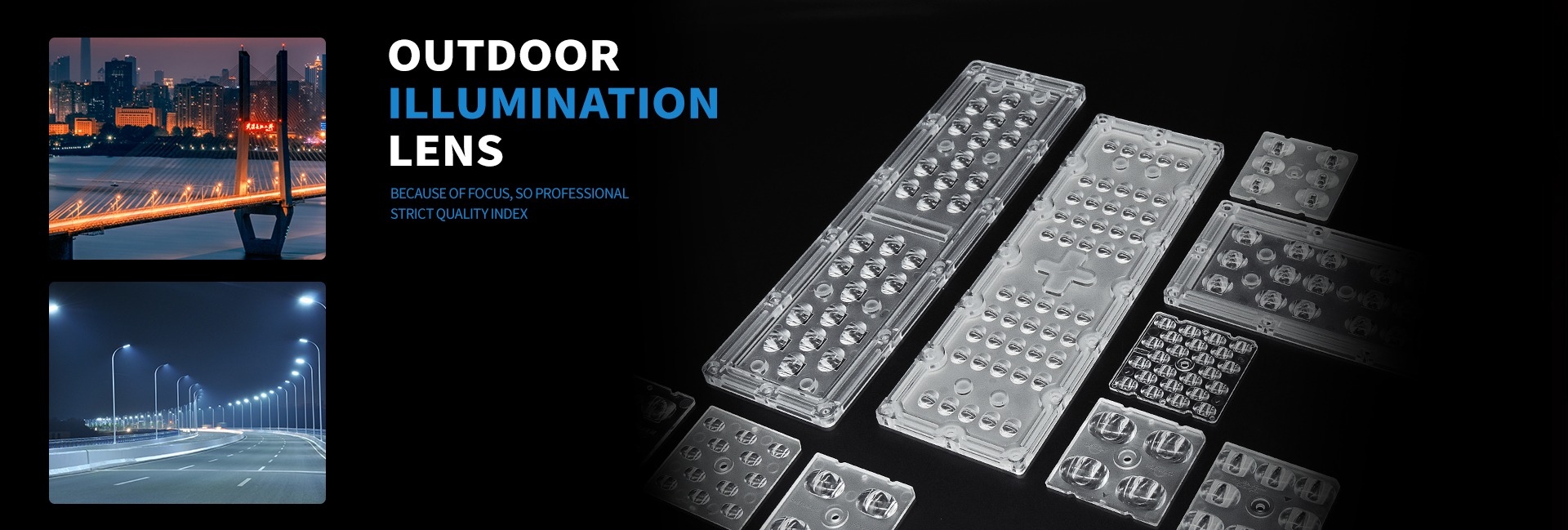
Advantages of Customized CREE/OSRAM/BRIDGELUX LED Lenses Customized LED lenses offer precise light distribution for specific applications, enhancing efficiency by up to 92% compared to standard lenses. They enable tailored beam angles (1°–180°), reduce glare, and optimize color uniformity for CREE, OSRAM, and BRIDGELUX LEDs. Key benefits include energy savings, extended LED lifespan, and compatibility with complex lighting setups like automotive headlights or industrial fixtures.
Roadway Lighting: Purpose, Requirement
• Purpose of Roadway Lighting
– Illuminate roadway, sidewalk, bicycle pathway, signage
– Appropriate lighting reduces incidents of night driving
accidents
• Requirement for Roadway Lighting
– Illuminance Distribution
• Minimum Illuminance
• Uniformity
– High Efficiency
• Less energy loss as the number is high
– Illuminated area
• Illuminate roadway
• Do not illuminate other than roadway
• Expand the space between luminaires to reduce the number
• Optical performance is important for roadway lighting =>Optical designing is important
Roadway Lighting: Superposition & Tiling
• There is a couple of ways to build desired illuminance distribution with multiple LEDs
• Superposition
– All LEDs contribute to illuminance distribution equally
– Does not cause dark space even if one of LEDs is gone out
– Not affected by individual variability
– Need to adequately expand light
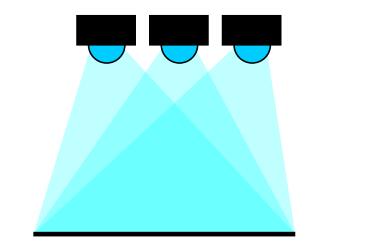
Roadway Lighting: Superposition & Tiling
• Tiling
– Each LED illuminates different area
– Causes dark space if one of LEDs is gone out
– Affected by individual variability
– Boundaries of illuminated areas from each LED are noticeable
• Superposition + Tiling
– Still problems of dark space and
individual variability
– Boundaries of illuminated areas are not noticeable
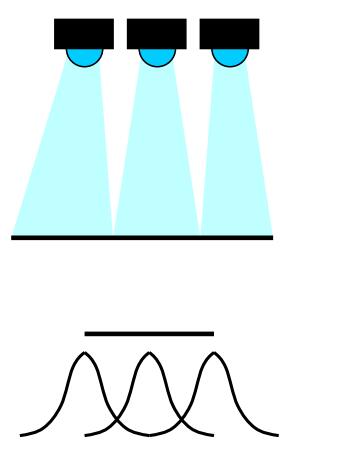
Roadway Lighting: Primary Designing Approach
• Choose one of three approaches below for
primary designing
– No Optical System
• LED themselves are placed at a particular height
– Direct Optical System
• LED (and emission direction), optical system and ground are in line
– Indirect Optical System
• Other than “Direct Optical System”
• Light from LEDs does not directly emit toward ground
• Each Optical System has advantages and
disadvantages for performance and aesthetic
Roadway Lighting: No Optical System
• The best approach if selected LEDs
have the desired intensity distribution– Most high-brightness LEDs have
Lambertian (cosθ) intensity distribution
• Can also work if LED intensity
distribution is narrow and each
illuminated area can be controlled by tilting each LED
– Tilt and place lamps
– Basically same as “Tiling”
• Can see LEDs directly from many
direction
– Causes glare (reduces visibility of objects and visual performance)
• Cannot control light efficiency
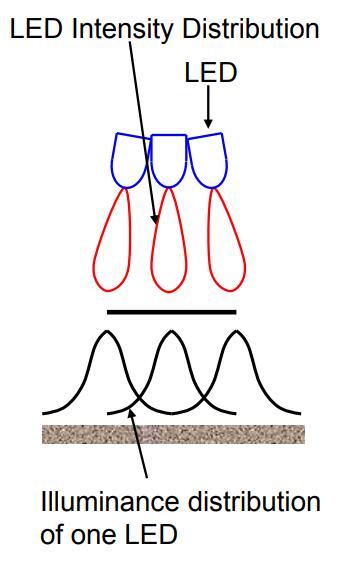
Roadway lighting: Direct Optical System
• Can control intensity distribution
– Intensity distribution which only illuminates
particular area is important for “Superposition”
– Intensity distribution is needed to be converted as it is rare that a LED has such intensity
distribution
• Works well with high-brightness LEDs
– Can convert Lambertian intensity distribution
to more suitable intensity distribution
• Can greatly reduce angular region which
LEDs can be directly viewed
• Light efficiency can be higher than “No
Optical System”
– Light can be extended too much with “No
Optical System”
• Optical System is refractive or reflective
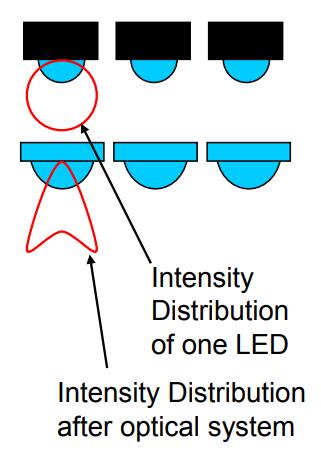
Roadway Lighting: Indirect Optical System
• LEDs are not directed
toward to the ground
• Optical system redirects
light from LEDs toward the ground
• Hard to view sources
directly
• Difficult to efficiently
redirect light from
Lambertian LEDs
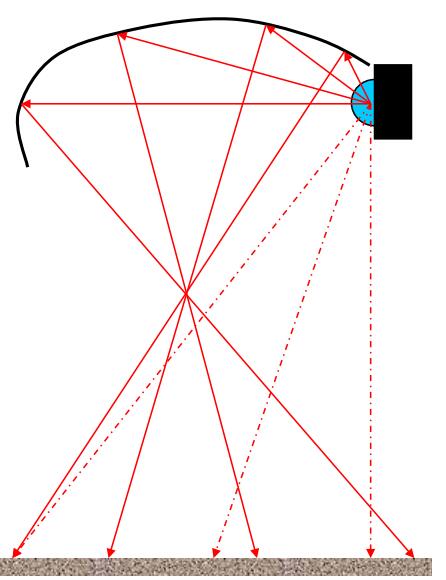
Roadway Lighting: No Optical System Example
• 27 Cree XR-E LEDs
• No Optical System
• Placed Height: 5m
• Mechanical structures were
designed in SolidWorks
– Imported SolidWorks assembly
into LightTools
– Set optical properties to all of the surfaces
• Roadway and mechanical
structures absorb light
• The lens considers Fresnel Loss– Add sources and receivers to the model
• Each of the sources emits 100lm• Ran optimization to smooth and
spread the illuminance distribution
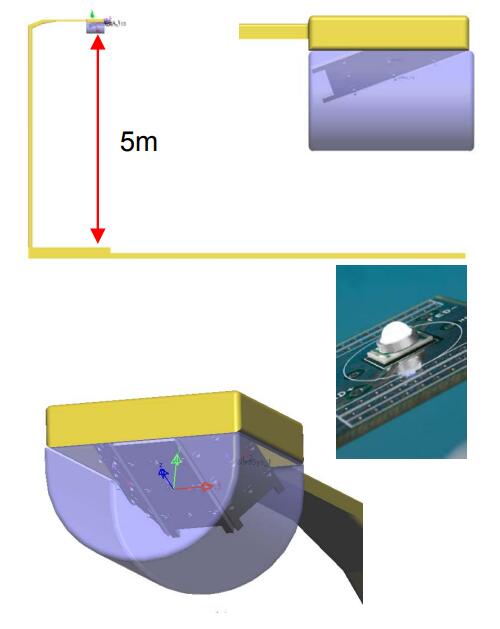
Roadway Lighting: No Optical System Example (Result)
• Peak Lux on roadway surface: 40Lux– Results for 10 million rays
• Linear shadow appears on the
illuminance distribution by the effect
of refraction through the outer lens
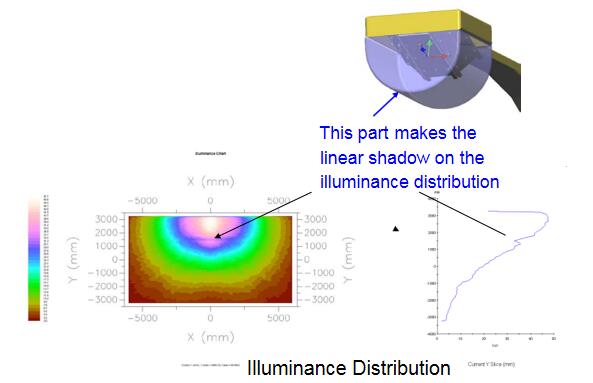
Roadway Lighting: Direct Optical System Example
• A unit of Cree XR-E LED
and a Lens
– LED Flux: 100Lumen
– Placed Height: 5m
– Optimize the lens shape to uniform illuminance on a
7m x 12m area
• LED only
– Flux on the 7m x 12m area: 68Lumen
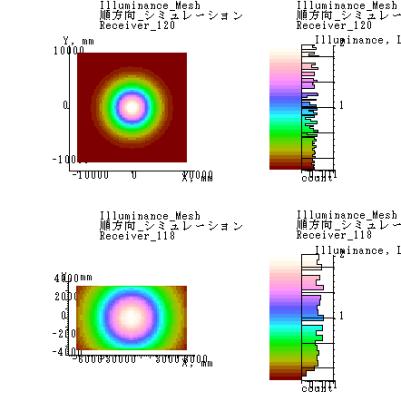
Roadway Lighting: Direct Optical System Example (Result)
• Flux on the 7m x 12m area: 83Lumen
– Higher Efficiency: 68%=>83%• Superposition is possible
– If more units are placed,
illuminance is increased
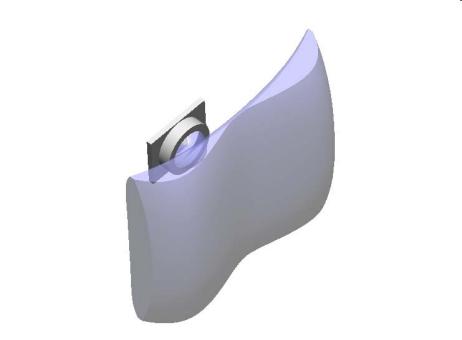
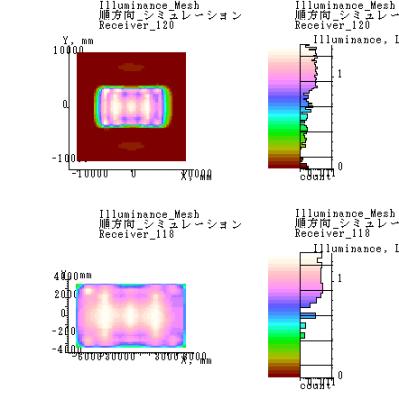
Roadway Lighting: Indirect Optical System Example
• A unit of Luxeon K2 LED and a faceted mirror
• Placed Height: 5m
• Module Configuration
– If more units are placed, illuminance is
increased
• Mirror Reflectance: 75%
• Optimize the reflector
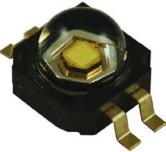
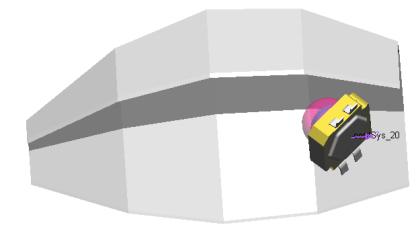
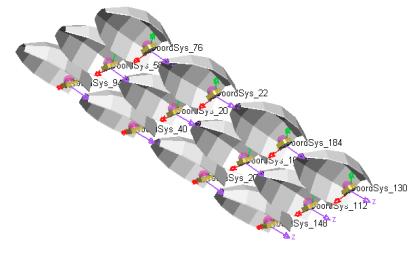
Roadway Lighting: Indirect Optical System Example (Result)
• 12 LEDs
– Each LED emits 180Lumen
• Peak Lux on roadway surface: 25Lux• The Reflector shape is not optimum
– Efficiency: 40%
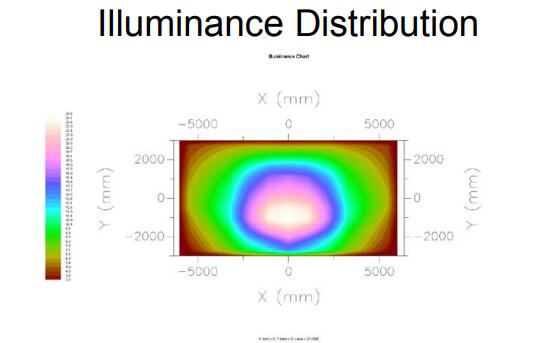
Roadway Lighting: Evaluation of Appearance
• Not only the value of illuminance distribution but also rendering like CG is effective to evaluate appearance– LightTools Photo Realistic Rendering feature
– Possible to export designed intensity distribution in
LightTools as IES file and import it into CG software
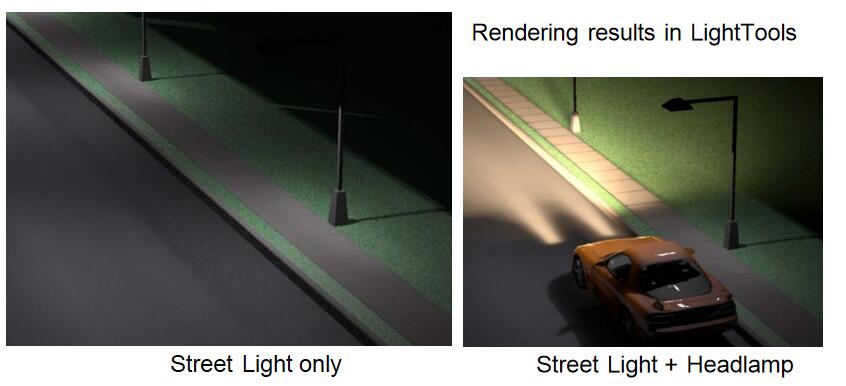
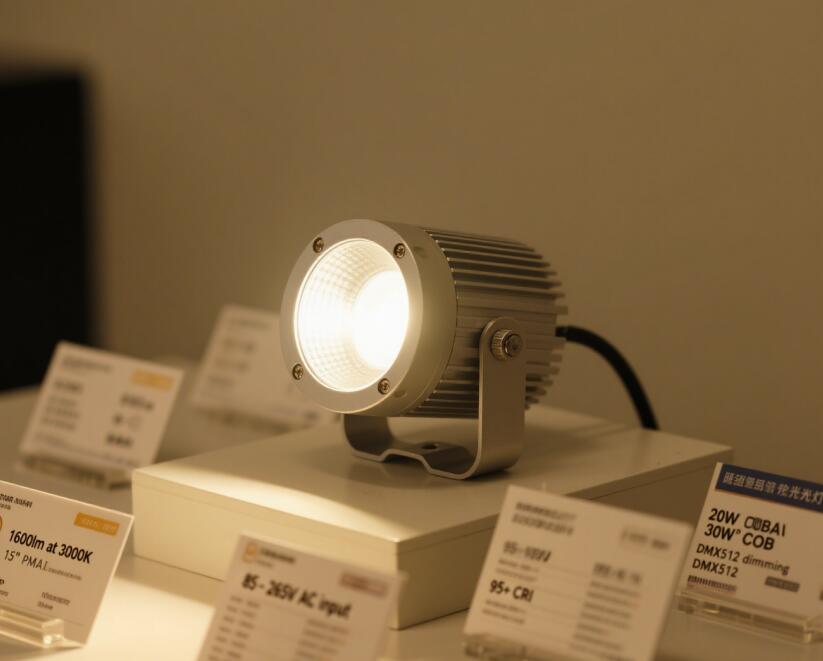
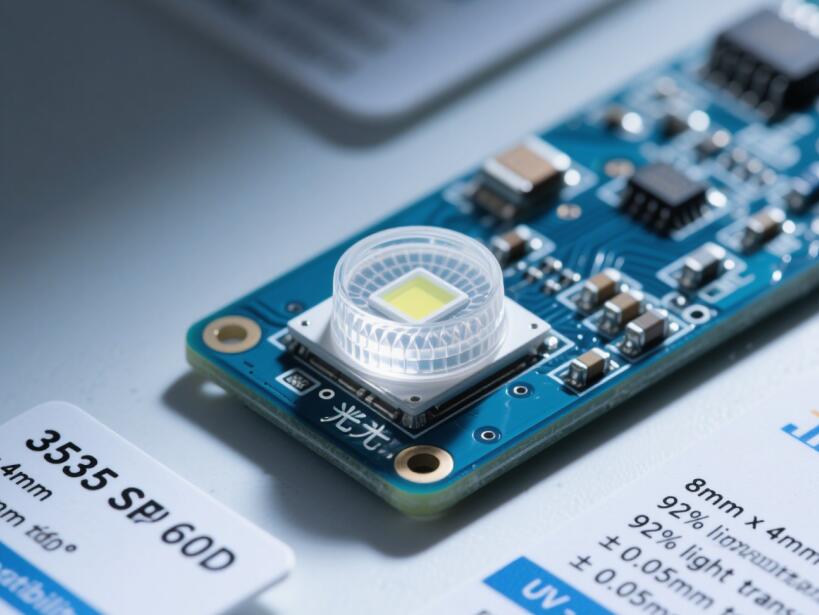
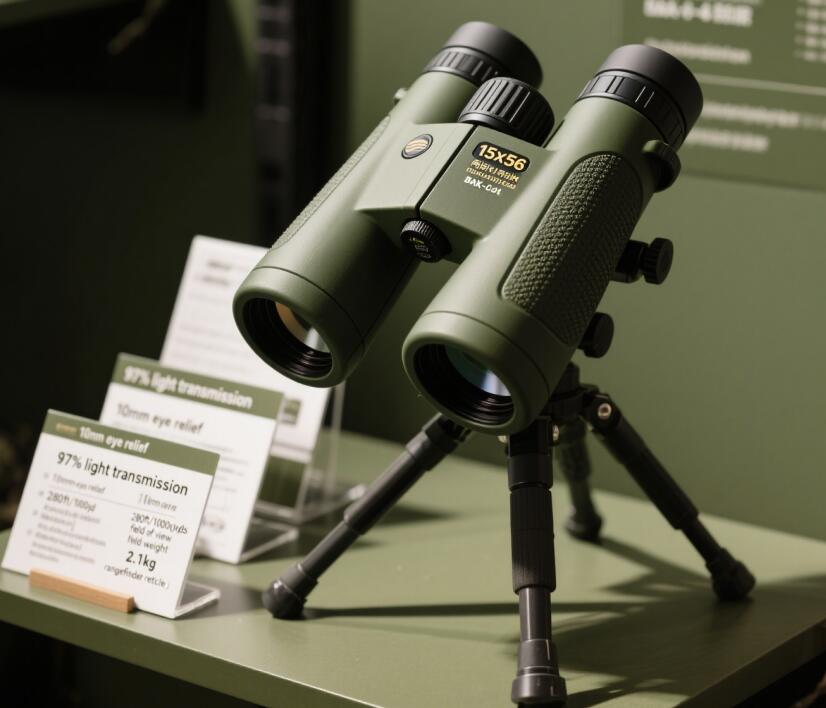
Previous:无